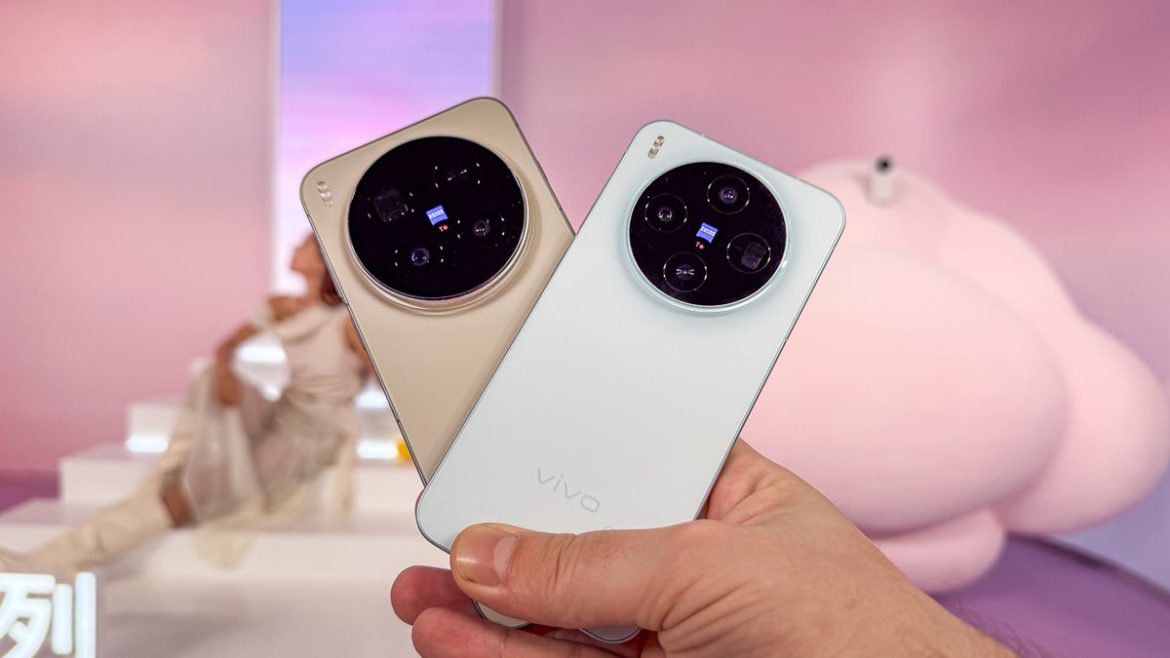The Vivo X300 and Vivo X300 Pro were just announced in Shanghai as the new flagship pair at the tail end of 2025.
Well, technically, the X300 Pro is the actual flagship. While the pair share the same processors and mostly the same camera specs, the X300 Pro has a couple of exclusive features that do set it apart.
We had a good couple of days of hands-on time with the two devices already, given to us on hand and allowed to wander Shanghai with them. These are our first impressions.
And yes, there are plenty of camera samples to come, and you will find the first batch in this article.
The Vivo X300 Pro and Vivo X300 are sort of “the flagship” and “the compact flagship”. As such, one main difference we have is in screen size. The X300 has a 6.3-inch, 120 Hz OLED panel, the X300 Pro is 6.78”, 120 Hz OLED.
There are a lot of screen color settings, specifically for eye comfort and protection. The screens look pretty good, with mature and realistic colors. There’s also the Bright setting if you like your OLED screen to have searing-hot reds and pumped-up yellows.
had a rounder design, with a back and front glass that arched into the frame. This time around, this is gone.
We have a completely flat back and front, and the aluminum frame on the side is only slightly beveled. A design that feels somewhat familiar if you’ve recently held an iPhone 16 in hand.
The backs of the devices have very fine-grain frosted glass, which feels very pleasant to the touch. In fact, the entire phones make a very nice first impression when held. They feel “just right”, properly balanced, and easy to hold thanks to the flat sides and not too much weight.
Both devices have an ultrasonic fingerprint scanner, and it’s blazing fast. Even scanning your finger is some sort of dark magic – you don’t need to lift your finger and press again anymore. Just swipe across the sensor area, and it’ll get a scan that is somehow accurate and good enough for future unlocks.
The cameras: very good first impressions
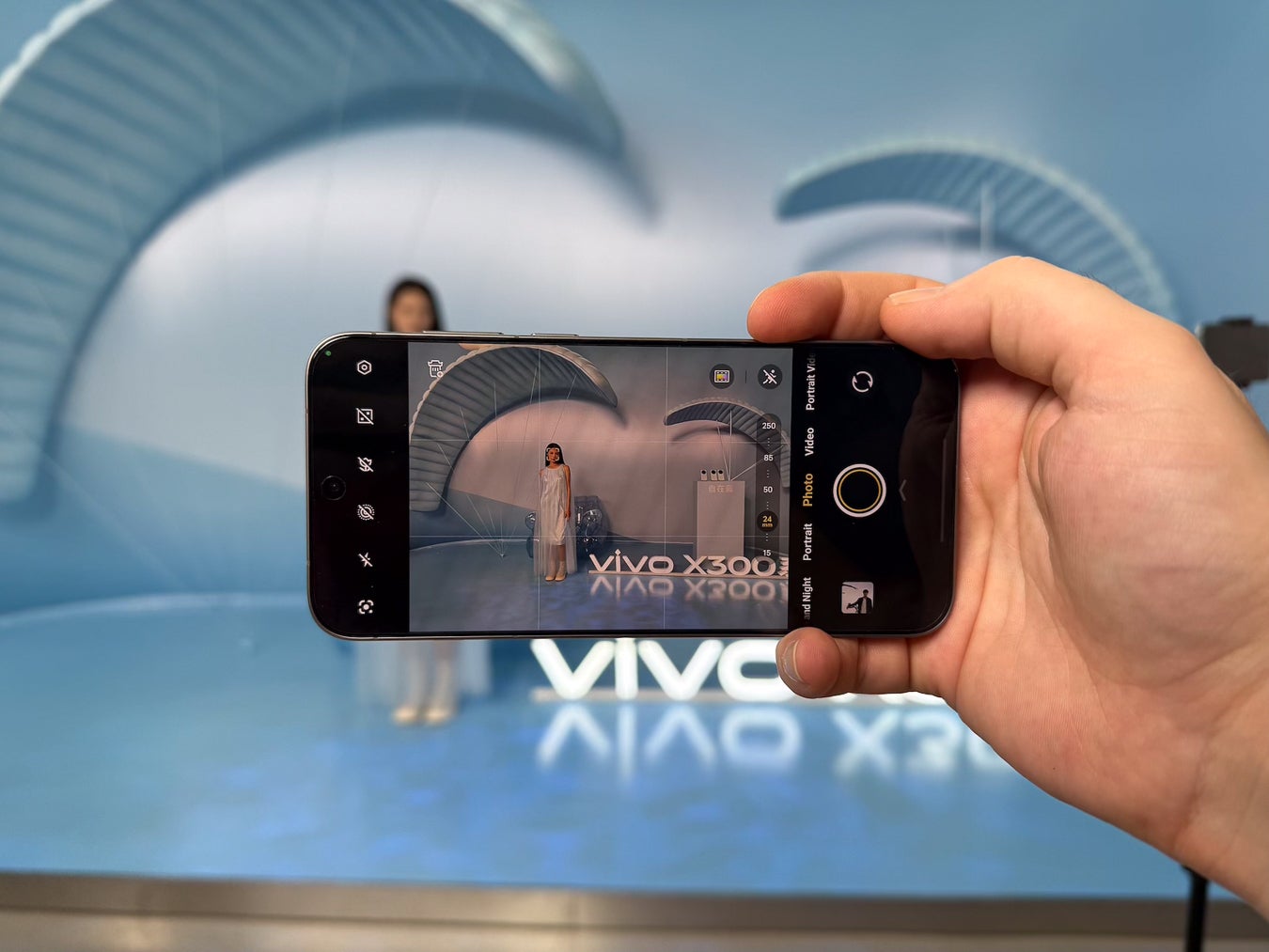

Vivo X300 Pro adds the VS1 and V3+ imaging chips, giving it smoother, sharper photos than the standard X300. | Image credit — PhoneArena
So, the camera specs differ a bit. The Vivo X300 Pro has a 50 MP main, 50 MP ultra-wide, 200 MP zoom camera, and a 50 MP selfie snapper.The Vivo X300, on the other hand, has a 200 MP main camera, 50 MP ultra-wide, 50 MP zoom, and 50 MP front one.But that’s not where the differences end. The X300 Pro adds another imaging chip that is dedicated to camera processing. Two, actually — its own V1+ and VS3 chips for complete control over the imaging pipeline. And the combination of the two definitely produces photos we would call “better” over the Vivo X300 samples.
Here are some Vivo X300 Pro photo samples:
And some Vivo X300 photo samples:
The Vivo X300 Pro also comes with a Photography Kit that includes a case, a long physical lens that you can attach to it, and a camera grip to make the whole thing easier to handle (and add a few physical camera controls).
The lens does improve zoom, but it’s quite impressive what the “naked” camera can do with the help of AI:
And on yet another note, the Vivo X300 Pro has a “Native Lighting” toggle, which appears to pull back some of the camera processing. We certainly noticed a drop in sharpening, giving me a more “realistic” image. However, the software isn’t very helpful in explaining what exactly that toggle does, so hold on until we do some research on the subject before sharing samples and final opinions.
The cameras also have the Street Photography mode, which amps up the shutter speed and adds a pinch of faux bokeh to the background to help you capture moments as they happen. This year around, double-pressing the Volume Down button of the phone immediately takes you to Street Photography mode (this can be changed in settings), so you have quick-access to the mode that’s meant to capture fleeting moments.
Performance: first-ever phones with MediaTek Dimensity 9500
The MediaTek Dimensity 9-series are the flagship chips from the silicon slinger and while they are not super-popular in western markets, we do find them to be very competent. The Dimensity 9500 is the second generation 3 nm processor from MediaTek (successor to the Dimensity 9400) and, having the phones in our hands, of course we snuck some 3DMark tests in!
Both the Vivo X300 and Vivo X300 Pro start off with the same high score at around 6900 and ultimately end up throttling to about 3800. This is a very good result, and it’s comparable with the iPhone 17 Pro scores that we got on the same test.
But it’s notable that the X300 throttles quite quickly – by the end of the second cycle, it’s about done.
The Vivo X300 Pro seems to have the more robust thermal management, as it holds the line for about 4 cycles until it ultimately drops to throttled mode.
But we did feel the frames of the phones get quite warm. Not searing hot, but a step to the north of the threshold for comfort.
The MediaTek Dimensity 9500 was actually a product of a partnership between Vivo and MediaTek. And Vivo was not shy about its inspirations – the company said they went on a deep dive to figure out why users like the performance of iPhones. As we know, it’s due to the synchronous development of the hardware and software.
Both X300 models come with up to 16 GB of RAM and as much as 1 TB of storage, depending on region. The base X300 variant starts at 12 GB + 256 GB in China, which should translate to a generous baseline for multitasking and media storage.
Software: Origin OS is global
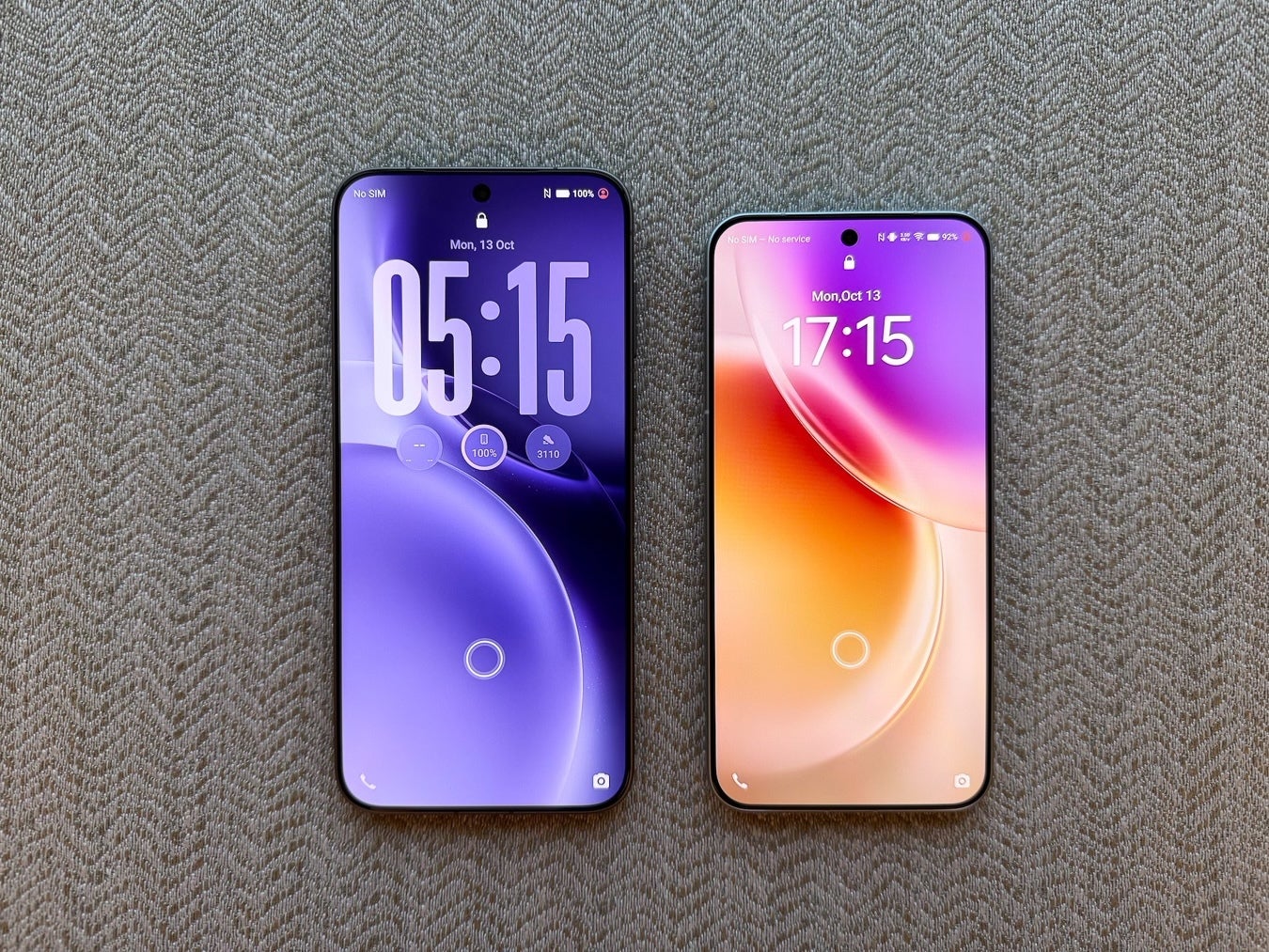

Vivo’s interface borrows from iOS, with familiar lock screen, control panel, and background design cues. | Image credit — PhoneArena
Just last month, Vivo proudly announced Origin OS 6 and that it’s going to be global now. To clarify – Vivo phones that were sold internationally used to come with FunTouch OS, whereas the Origin-branded UI was for the China-bound models.So, if you have a Vivo flagship from last year – be it an X200 Pro or the Fold X3 – you should be getting Origin at some point soon.
Origin OS 6 is built on top of Android 16, marking the first time Vivo’s flagship software and Google’s latest version arrive together out of the box.
Functionally, it’s about the same as Funtouch. We did praise the Vivo X200’s user experience last year, as Funtouch had plenty of ways to drag files from one app to another, engage with split screen, take area screenshots, and much more.
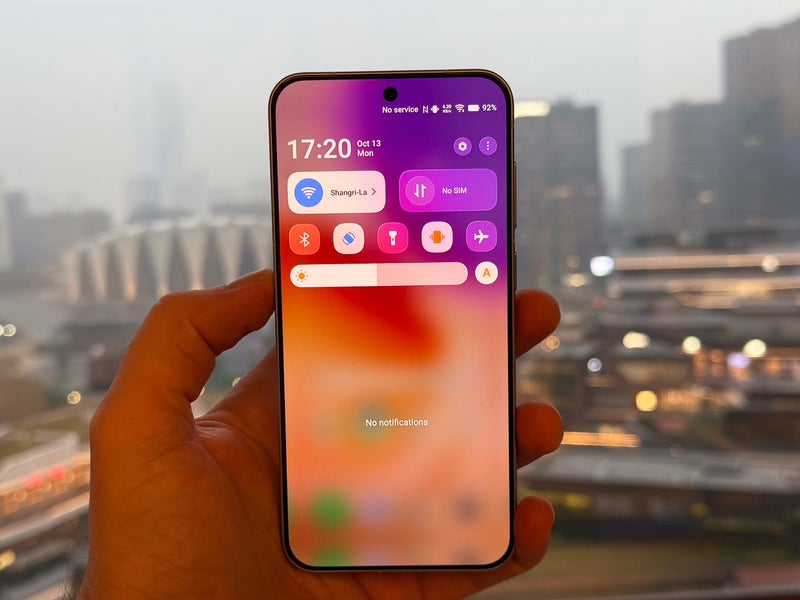
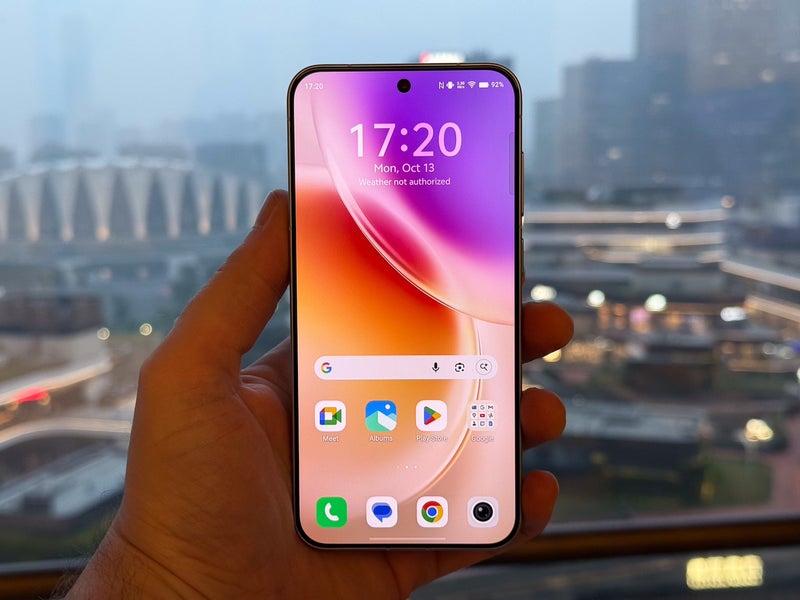
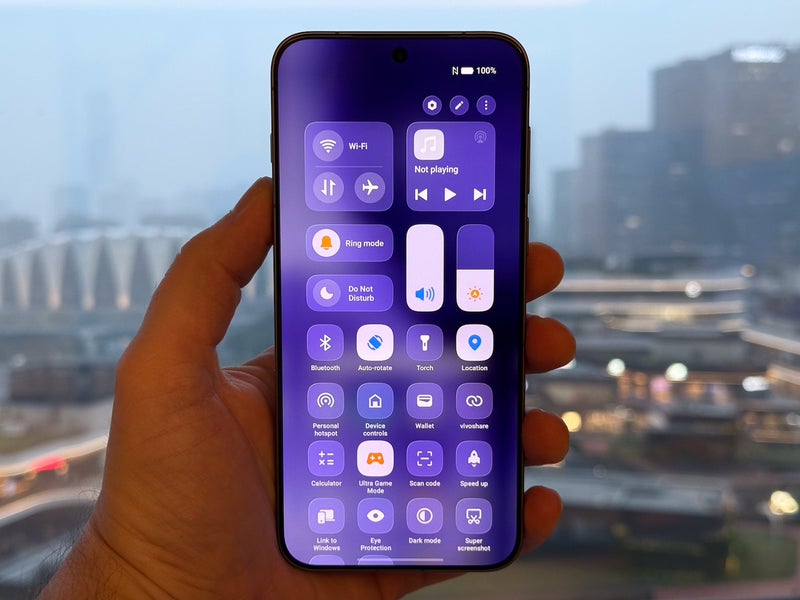
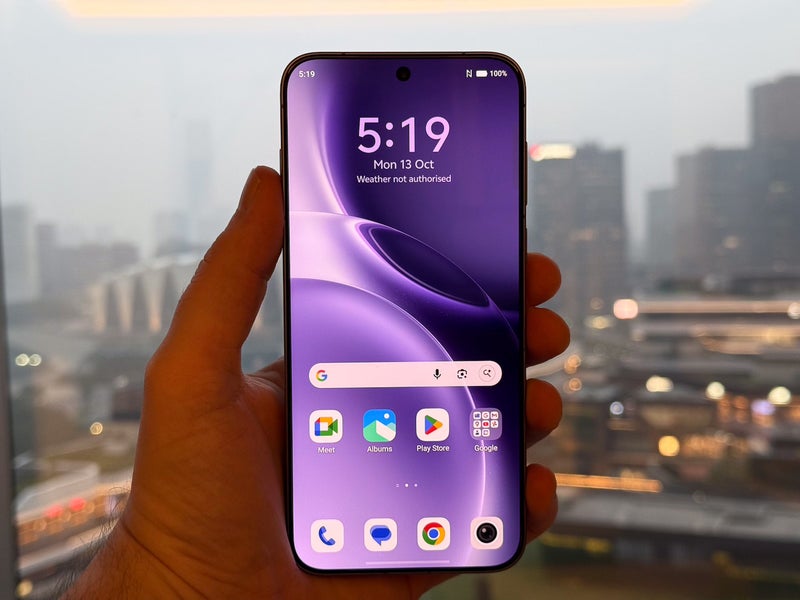
Origin OS 6 is the evolution of that with a fresh new paint. It also allows you to customize it more than some popular Android phones would. For example, it has the split of two drop-down menus – notifications if you swipe from the top-left, control buttons if you swipe from the top-right.
But some users hate this new style and prefer the old Android drop-down shade, so Origin OS allows you to pick between the two.
And yes, it does look a lot like iOS. Some elements even kind of, sort of look like Liquid Glass, but Vivo didn’t go as far. But the lock screen customization, the control panel, some backgrounds, they do look very familiar.
Vivo X300 and X300 Pro launch and price:
Keep in mind that all USD and EUR figures are direct conversions from Chinese yuan and may not reflect eventual regional pricing.
The Vivo X300 starts at:
- ¥4,399 (~$618 / €534) for the 12 GB + 256 GB
- ¥4,699 (~$660 / €570) for 16 GB + 256 GB
- ¥4,999 (~$702 / €607) for 12 GB + 512 GB
- ¥5,299 (~$744 / €643) for 16 GB + 512 GB
- ¥5,799 (~$815 / €704) for the 16 GB + 1 TB
The Vivo X300 Pro begins at:
- ¥5,299 (~$744 / €643) for 12 GB + 256 GB
- ¥5,999 (~$843 / €728) for 16 GB + 512 GB
- ¥6,699 (~$941 / €813) for 16 GB + 1 TB
- ¥8,299 (~$1,166 / €1,008) for the X300 Pro Photographer Edition
Vivo has so far only confirmed a China-exclusive launch, but given the brand’s recent track record with the X-series, we’re optimistic that a global rollout could follow later on.
#Vivo #X300 #Pro #Vivo #X300 #impressions #camera #samples
